Intakes
What is an Intake?
An intake is a mechanism on your FRC robot designed to collect and control game pieces from the field, either from the floor or a human player station. It's typically the first point of contact between your robot and the game objects you need to manipulate. A well-designed intake is crucial for competitive success because it directly affects how quickly and reliably your robot can acquire game pieces.
Key Functions of an Intake:
- Acquisition - Grabbing or collecting game pieces from the field
- Control - Maintaining possession of game pieces while moving
- Feeding - Transferring game pieces to other mechanisms (shooters, arms, etc.)
- Ejection - Releasing game pieces when needed
Important Considerations:
- Intakes must not jam - If jams occur, there must be a quick and easy way to clear them
- Wider is usually better - Wider intakes provide a larger target area and are more forgiving
- "Touch it, own it" - The intake should acquire the game piece the instant it makes contact
- No special operator actions required - Intakes should work automatically without complex button sequences or precise driver control
- Reliability is critical - Intakes must be robust and not break under normal use or defensive contact
Common FRC Intake Types
Horizontal Roller Intakes
Description: Horizontal rollers or wheels that spin to pull the game piece into the robot.
Best for: Balls, cylinders, and round game pieces
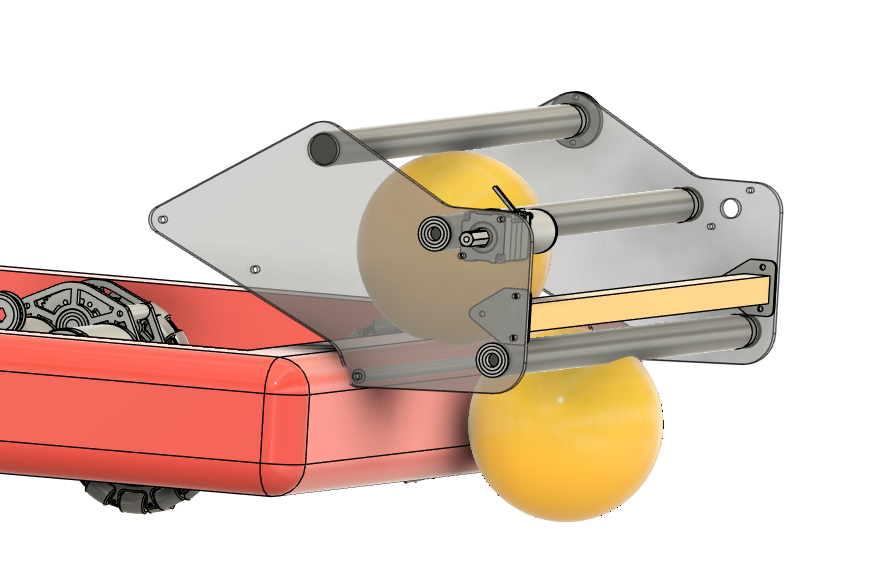
Pros:
- Excellent grip
- Can be large
- Simple to build and maintain
- Can intake at various angles
- Works well with compression
Cons:
- May struggle with irregular shapes
- Rollers can wear out over time
- Requires proper compression tuning
Note: When compression is applied to the game piece, roller intakes can struggle to effectively funnel or guide the piece into the desired position
Vertical Wheel Intakes
Description: Vertical wheels that spin on each side of the intake, used to pull the game element into the robot. Similar to a claw mechanism but with spinning wheels that actively grip and draw in game pieces.
Best for: Large Balls, cubes, weird shaped objects
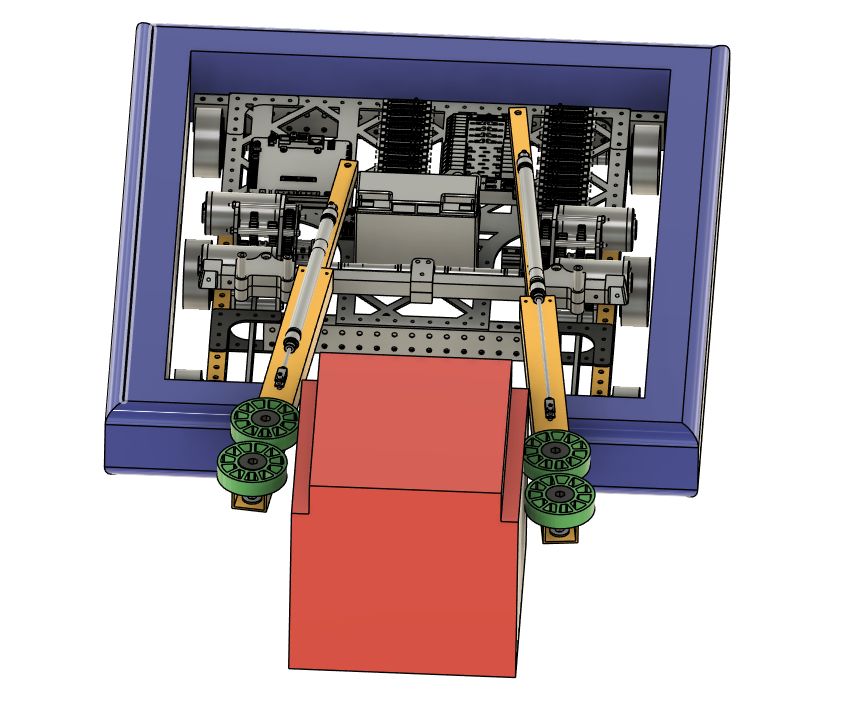
Pros:
- Grabs vertical walls well
- Easy to prototype and adjust
- Funnels game element horizontally well
Cons:
- Can kick the game element away if not properly aligned
- Needs precise alignment to effectively capture game pieces
- Does not contain the game element in the vertical direction
Claw/Gripper Intakes
Description: Mechanical grippers that close around game pieces using motors or pneumatics to create a secure hold.
Best for: Cubes, cones, irregular shapes
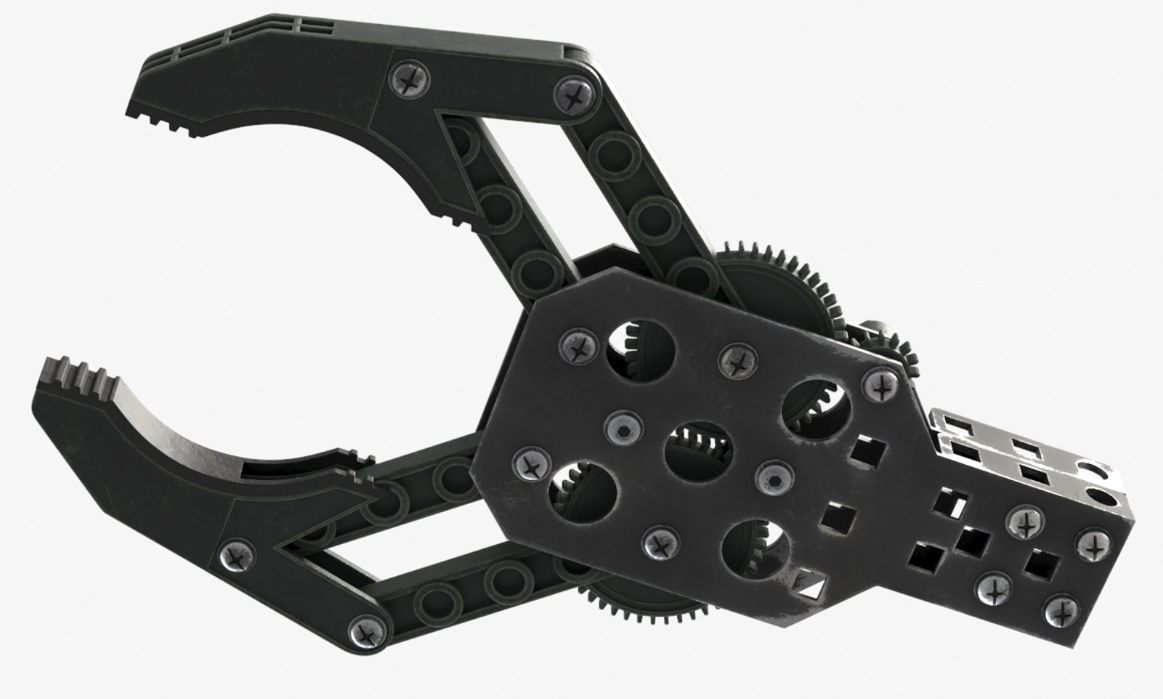
Pros:
- Secure hold on game pieces
- Works with irregular shapes
Cons:
- Slower cycle time (open/close)
- Requires precise alignment
- Does not actively pull the game element in
Suction Intakes
Description: Uses vacuum or suction cups to pick up game pieces by creating negative pressure that holds them against the intake surface.
Pros:
- Can pick up from various angles
- Secure hold once suction is established
- Can hold irregular objects
- Can handle multiple different objects
Cons:
- Limited to specific game piece types and surfaces
- Requires consistent vacuum
- Can lose suction if surface is dirty or irregular
- May struggle with heavy or textured game pieces
Active Pinching Intakes
Description: Uses one or two horizontal rollers that actively pull game pieces in by creating pinching action, either between two counter-rotating wheels or between a wheel and a surface.
Best for: Compressible game elements, balls, cylinders, or edges on objects
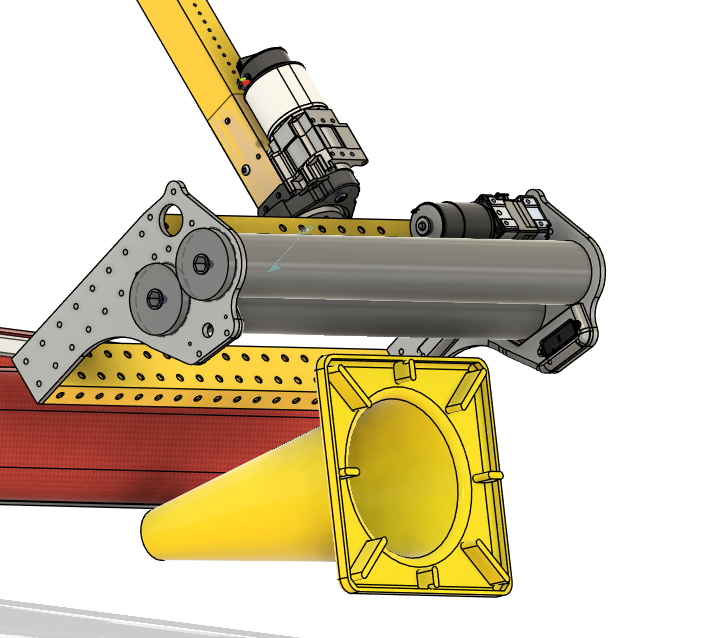
Pros:
- Actively pulls game pieces into the robot
- Simple and reliable mechanism
Cons:
- May require precise wheel spacing
- Can be affected by floor conditions
- Usually only handles 1 game element at a time
- Does not center object horizontally well
Funnel Intakes
Description: Wide-mouthed funnel-shaped mechanisms that guide game pieces from the human player station into the robot, often combined with other intake types for smooth transfer.
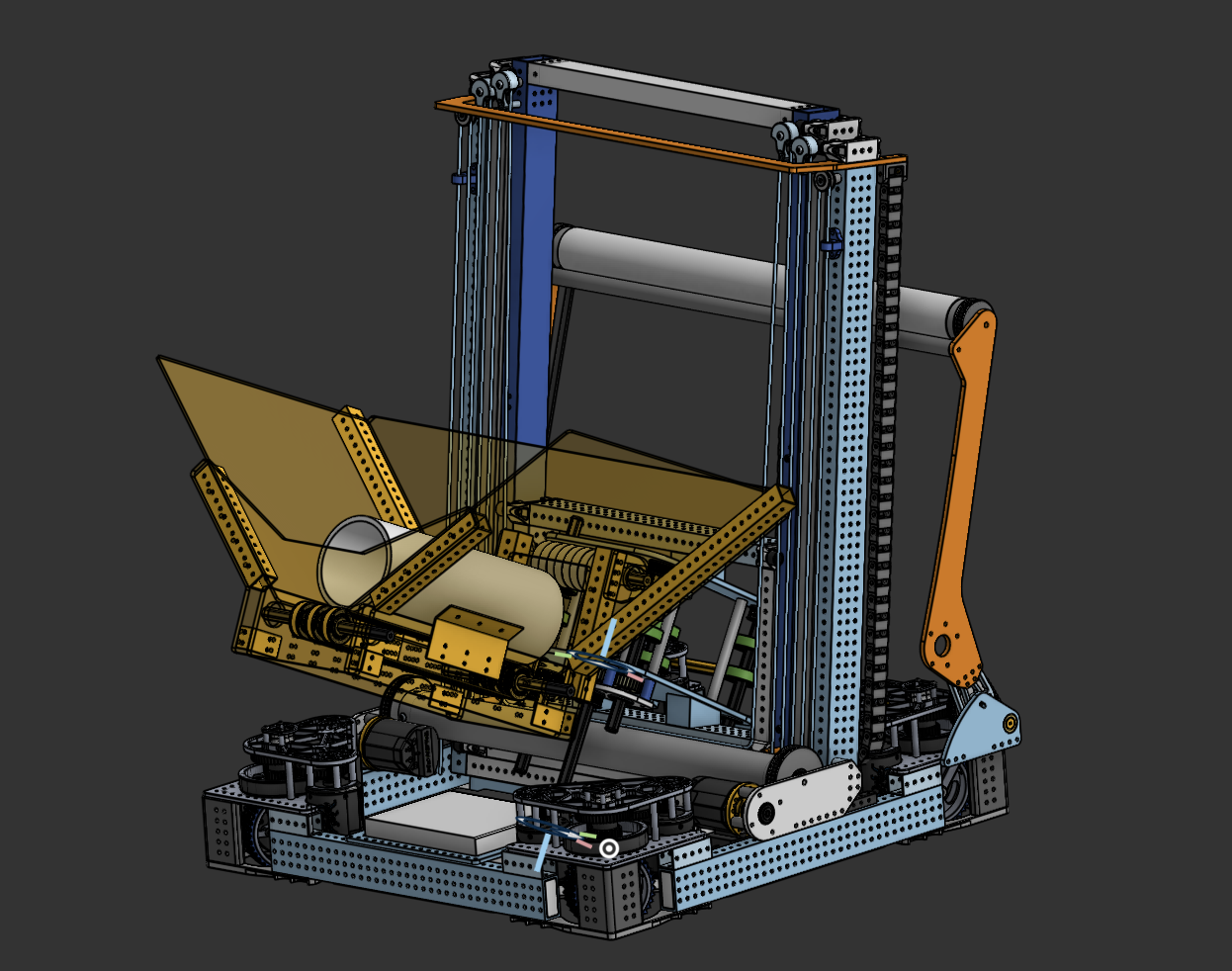
Pros:
- Wide target area for human players
- Guides game pieces reliably into position
- Simple and effective for station pickup
Cons:
- Limited to human player station use
- Requires precise positioning relative to station
- Dependent on human player accuracy
- Usually slow due to relying on gravity
- Game pieces may bounce or move unpredictably since there's no active pulling mechanism